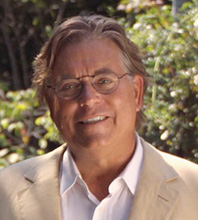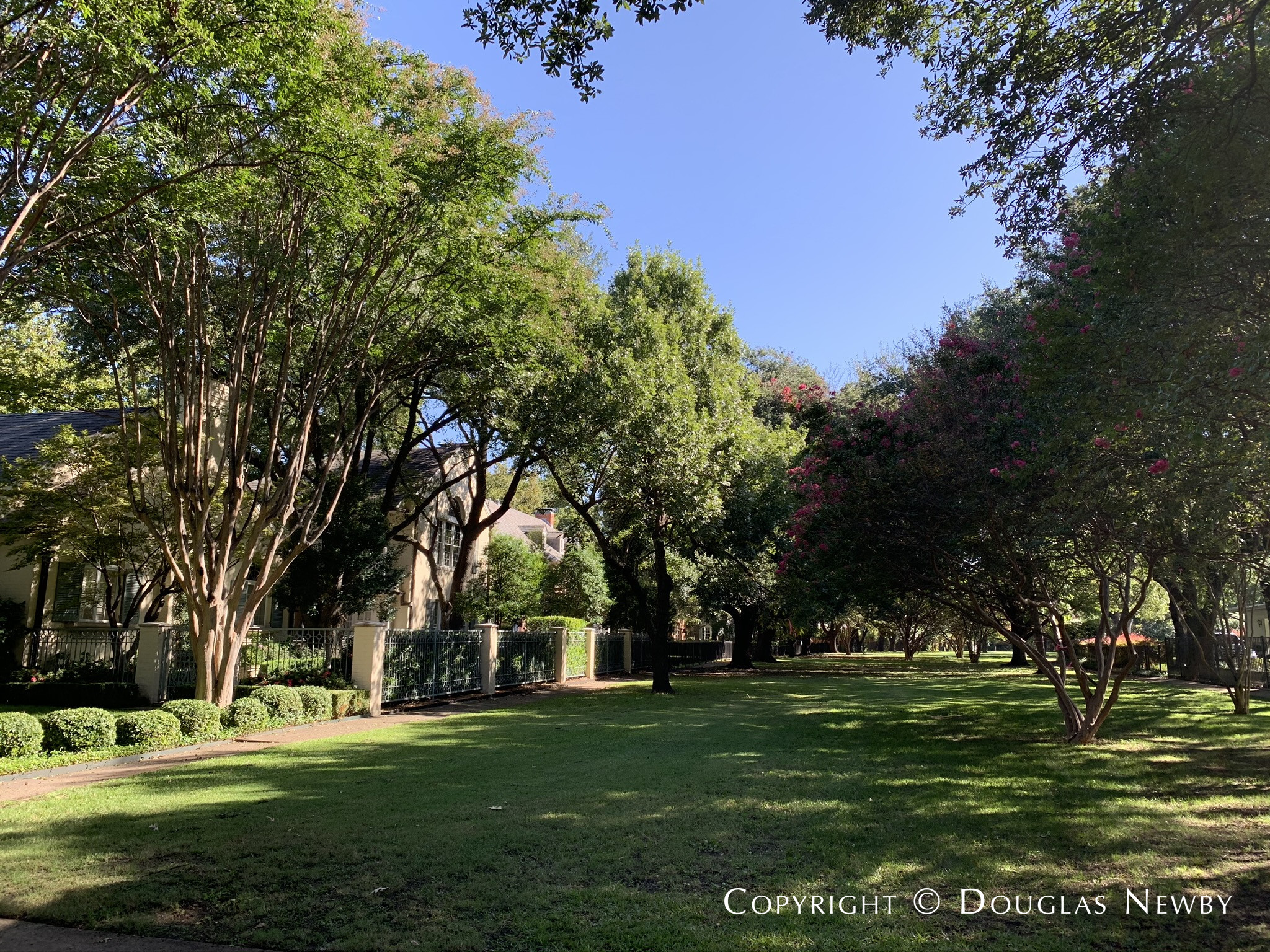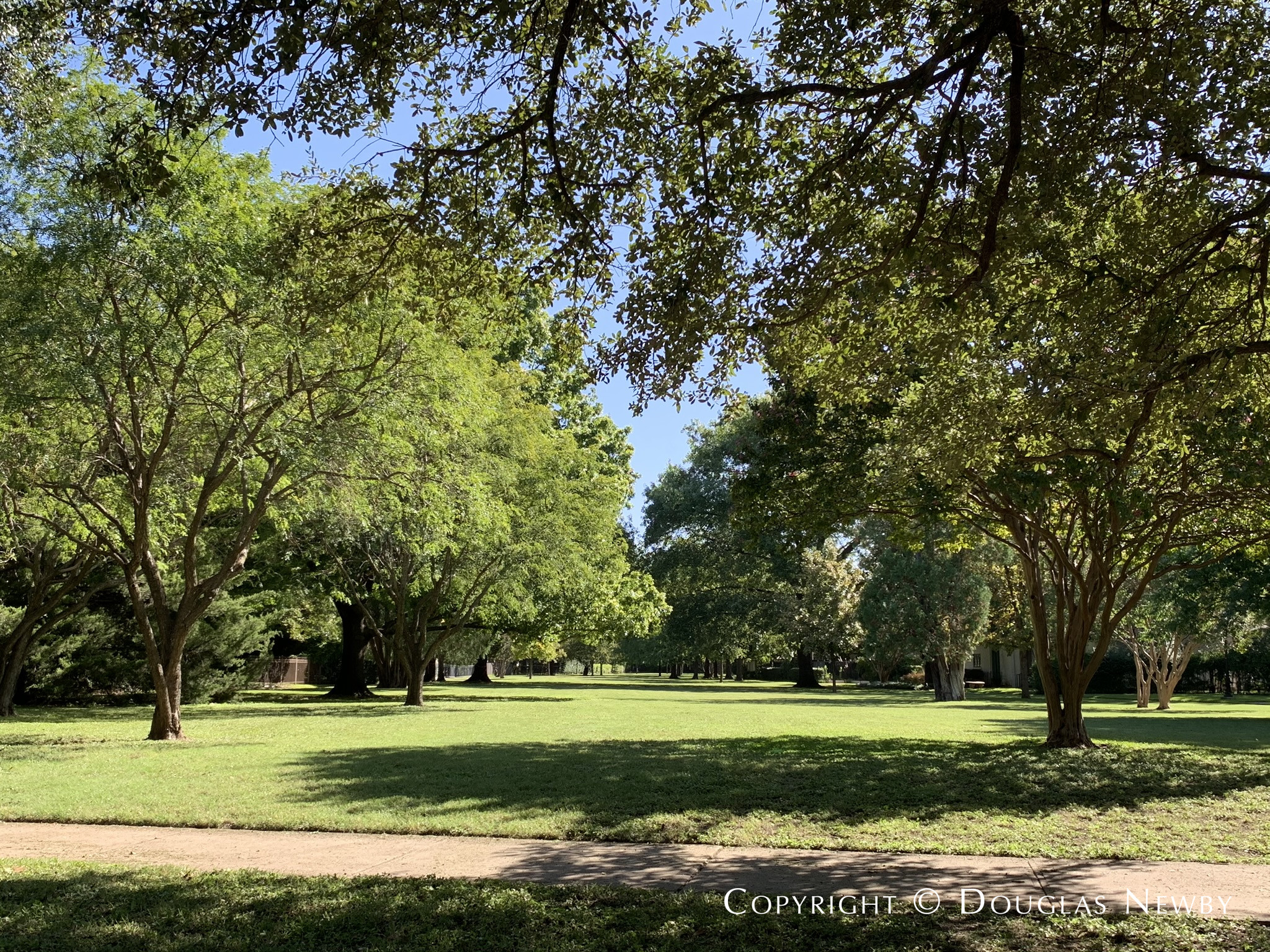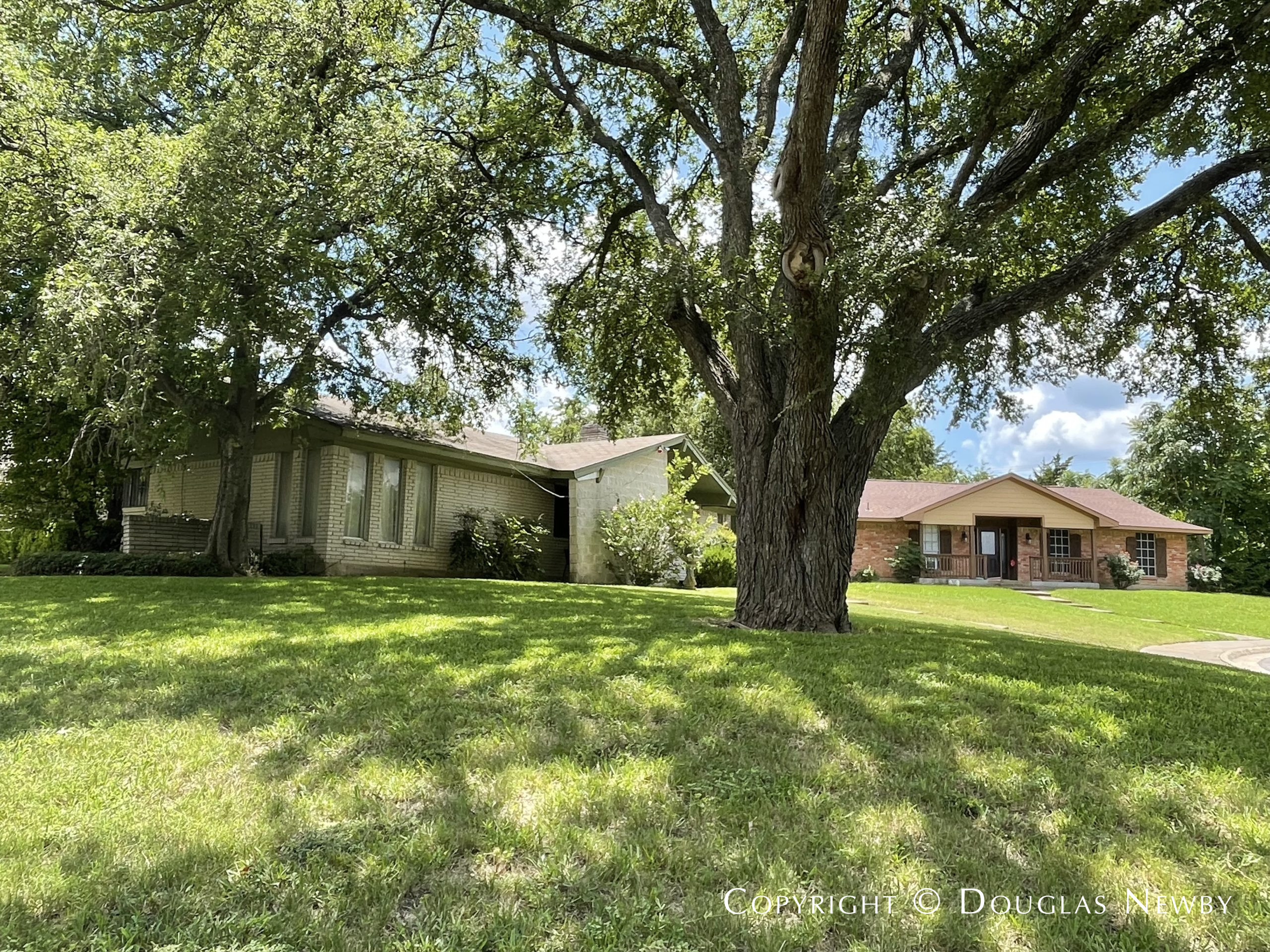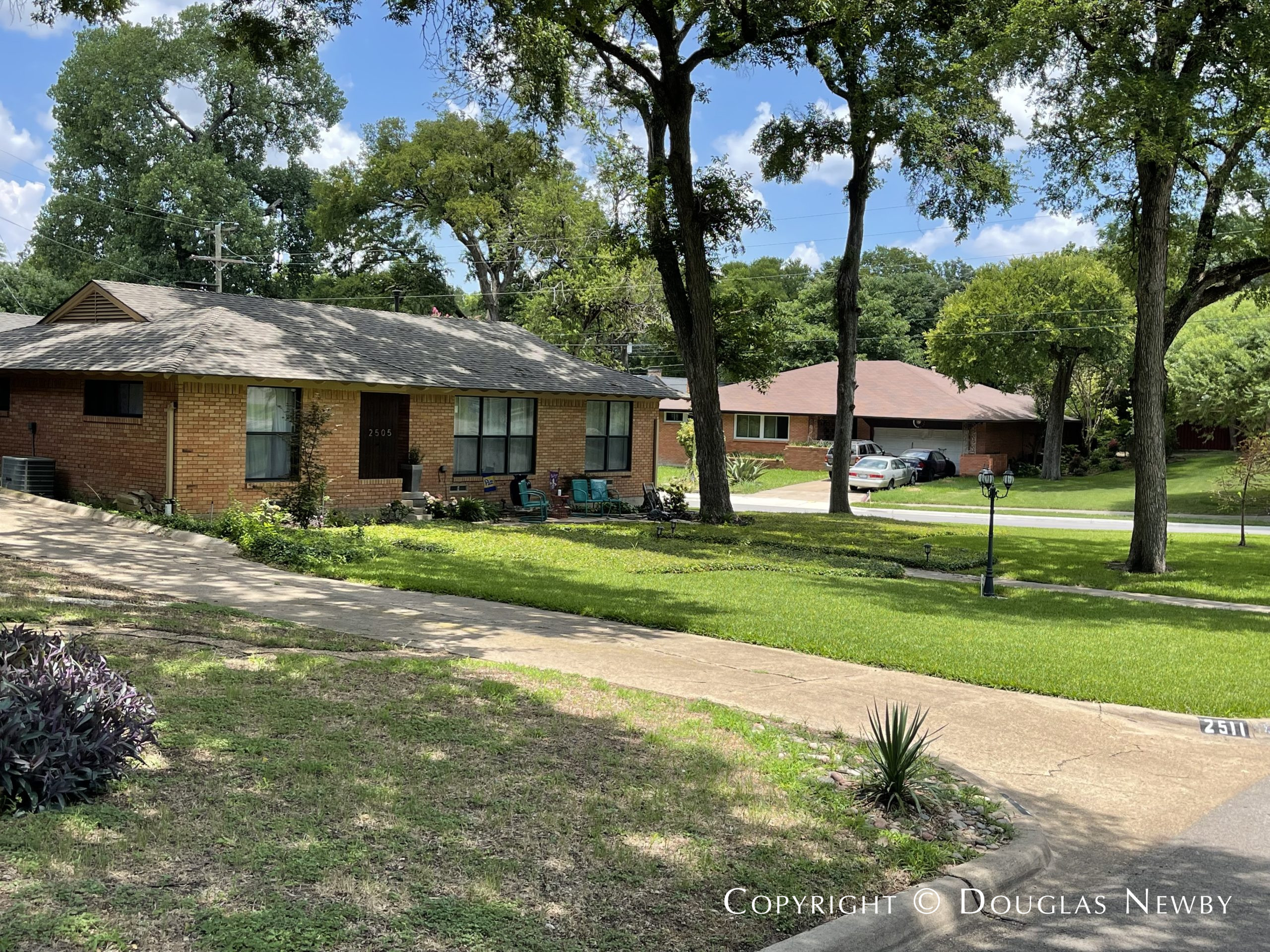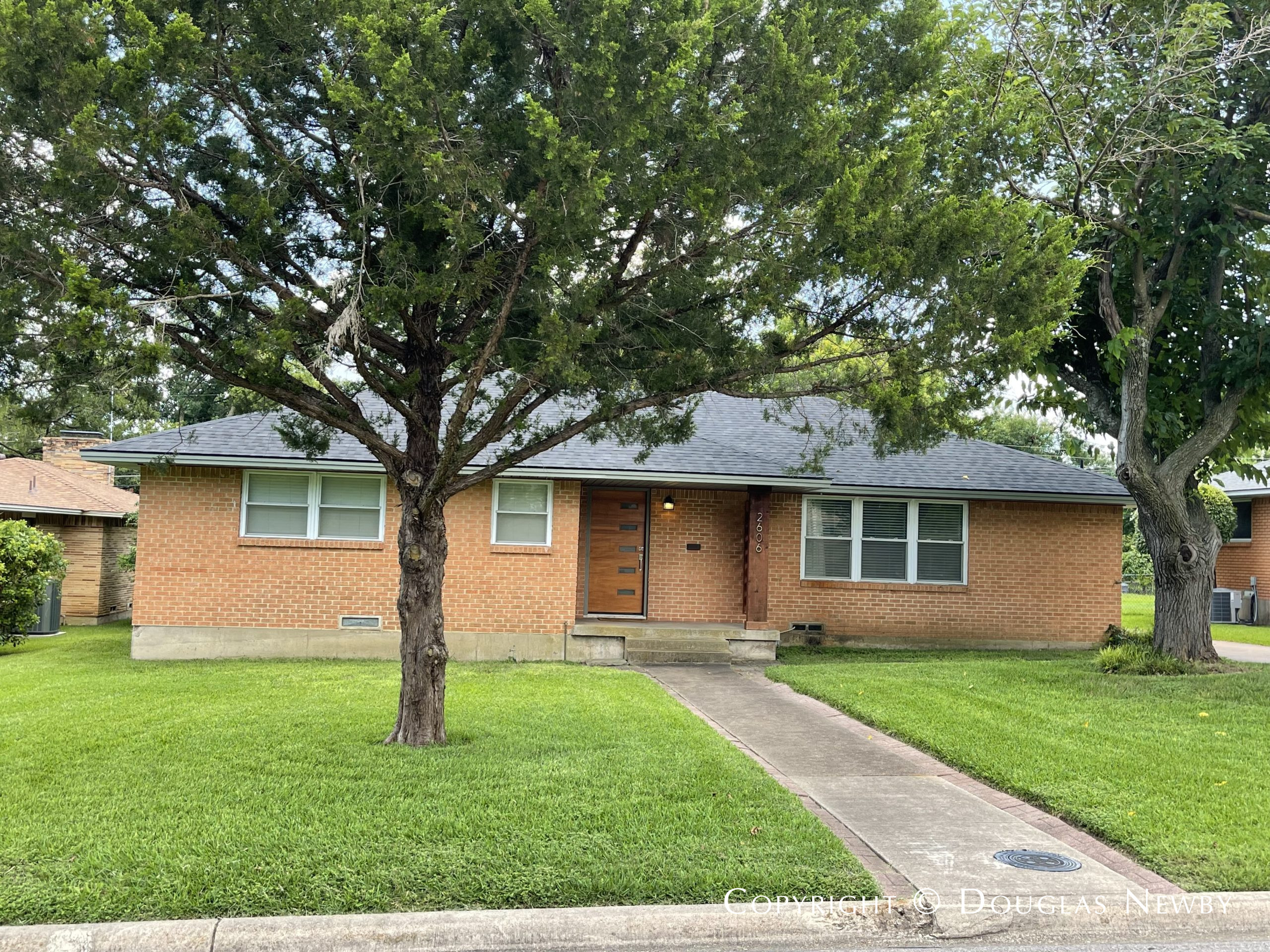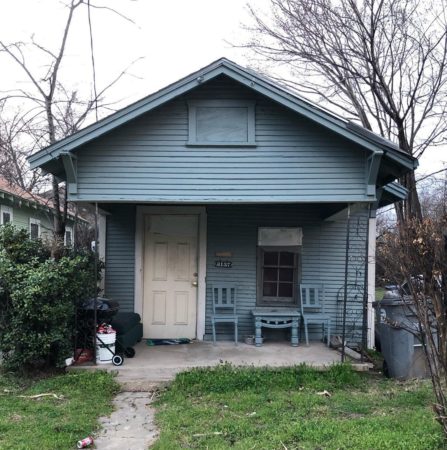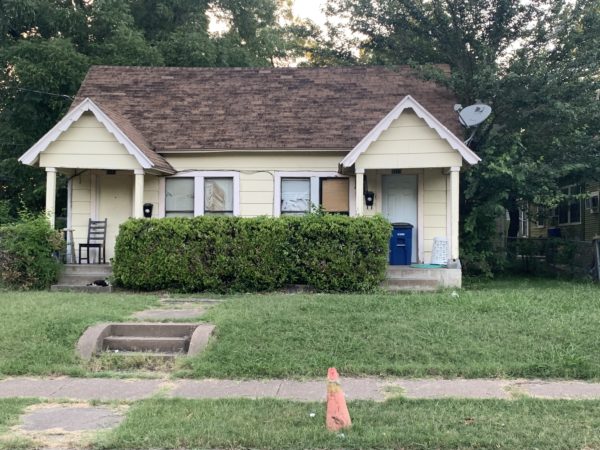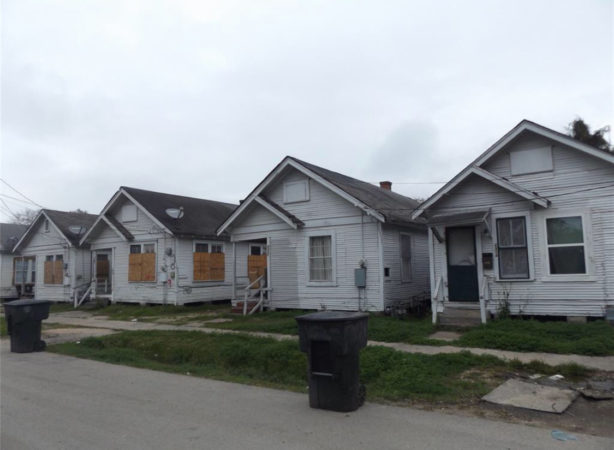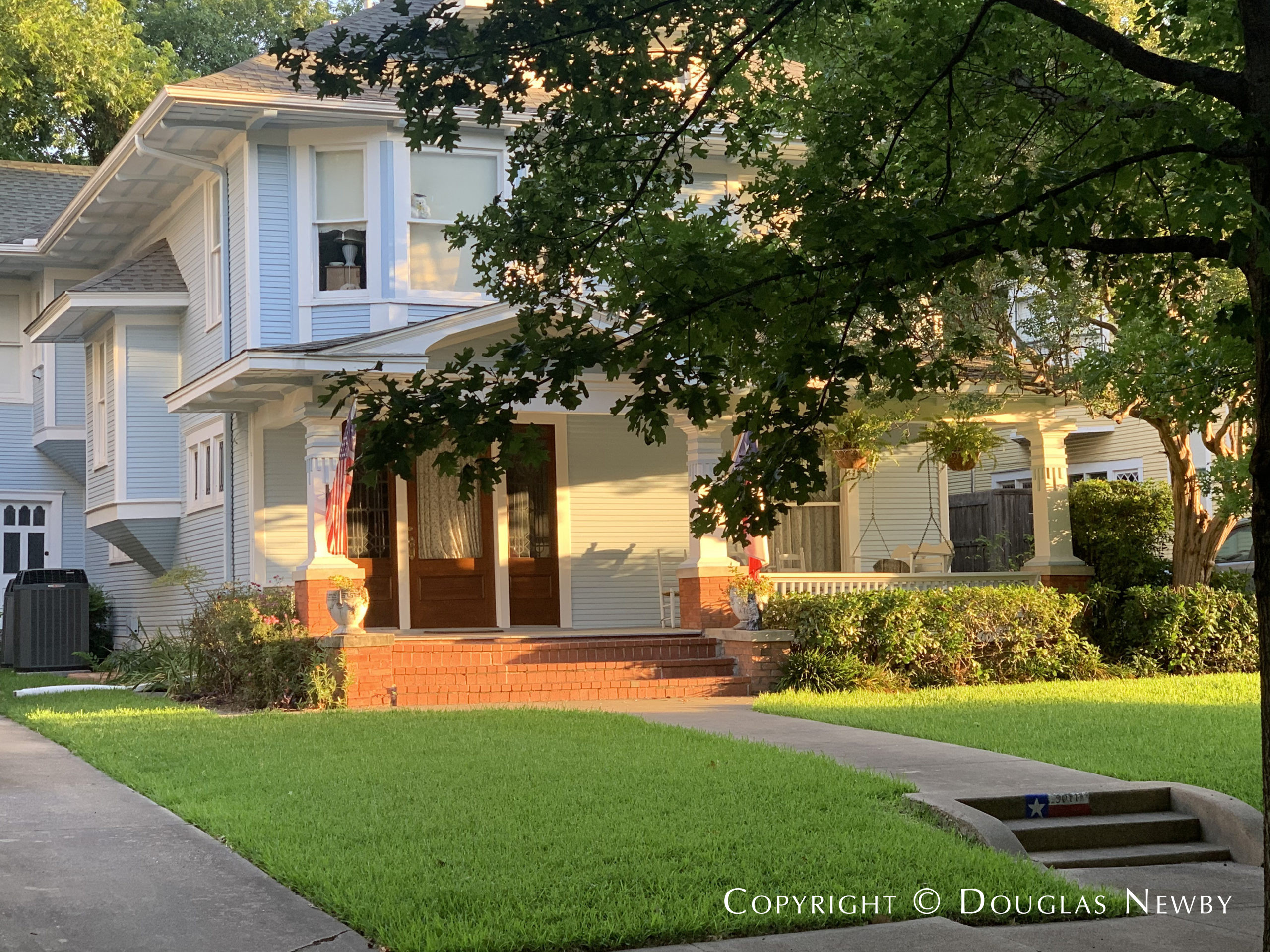
Greenlining designated areas of Southern Dallas for new and renovated single-family homes would give that neighborhood a positive direction, an economic thrust, homeowner confidence that propels a neighborhood and a certainty of success.
The More Homeownership in a Neighborhood, the Stronger the Neighborhood
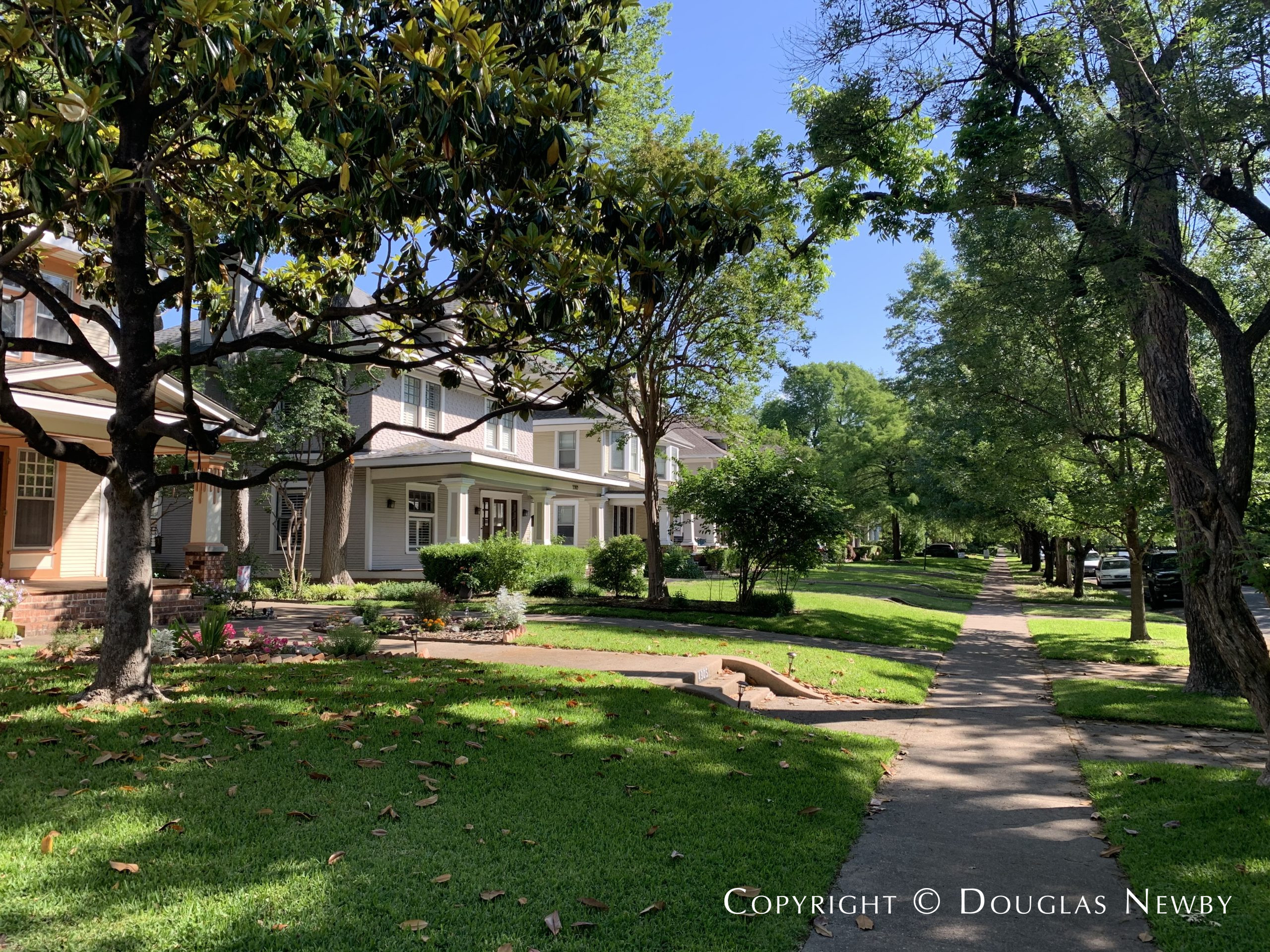
The strength, safety and viability of a neighborhood increases with the rise of home ownership. The smaller the percentage of home ownership, the weaker the neighborhood. Greenlining increases home-ownership.
Redlining and Bluelining Devastated Older Neighborhoods

Greenlining neighborhoods is the remedy for the negative effects of redlining and bluelining that have devastated Southern Dallas and older low-income neighborhoods for decades. Redlining turned off the spigot of conventional home loans in Southern Dallas neighborhoods as it did many older neighborhoods. Bluelining was even worse—it turned on a fire hose of free money for developers to buy inexpensive homes to tear down in order to build low-income and mixed low-income apartments. The more low-income apartments that are built, the fewer opportunities for those with low and moderate income to buy an affordable home.
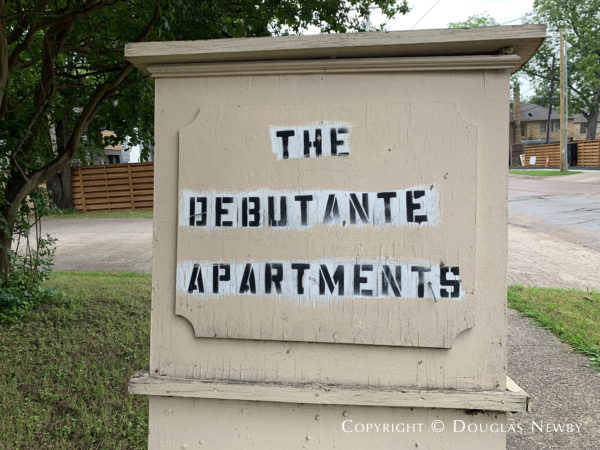
In the early 70s many thought that Old East Dallas was made up of Derelicts and Debutantes – a few debutantes and Junior Leaguers formed the Historic Preservation League to support Swiss Avenue. 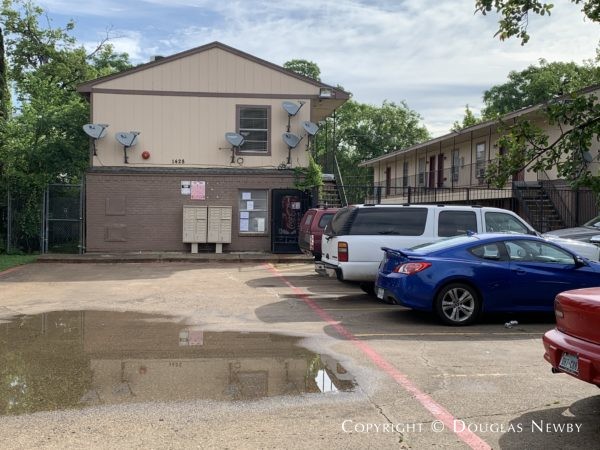
Just a couple of blocks from the Historic District, The Debutante has a timeless film noir vibe. 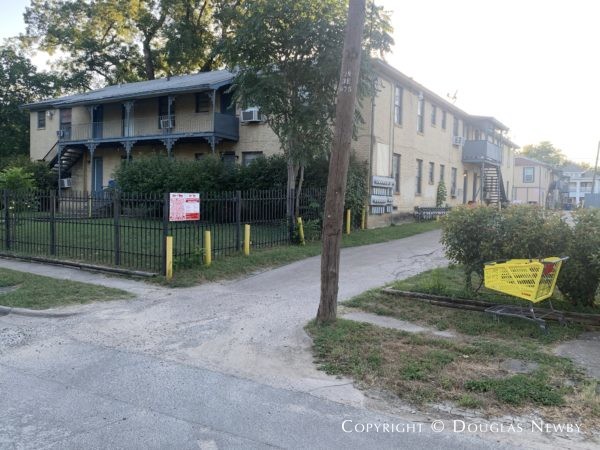
The parasitic projection of this apartment complex has made it scary for school children to walk to their grade school next door and has thwarted the renovation of the other structures on the block, and is an unpleasant visual interruption to the surrounding revitalized historic districts. Before it was greenlined, the entire neighborhood had the look of this apartment complex. 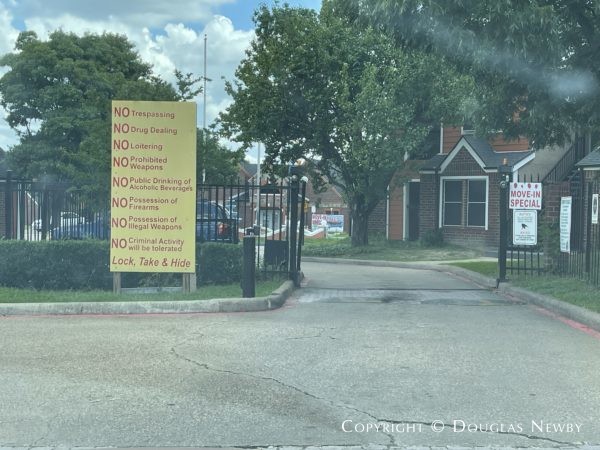
This Oak Cliff District 3 apartment is not even one of the 18 developer subsidized low-income apartments in District 3. The large sign in front of the apartment complex proclaiming NO to Weapons listed in three different ways and NO to Drugs and Criminal Activity advertise the problems apartment complexes attract.
Greenlining Stops the Bad—Encourages the Good
Greenlining is a two-pronged approach. Stopping the bad starts with prohibiting any new apartment units in a greenlined area. Encouraging the good starts with redirecting the free money that has been going to developers to buy land for their apartment developments or to subsidize their apartments and instead spending it on improving the landscape and infrastructure of an area or neighborhood.
Greenlining Prohibits Any New Apartments in a Greenlined Area
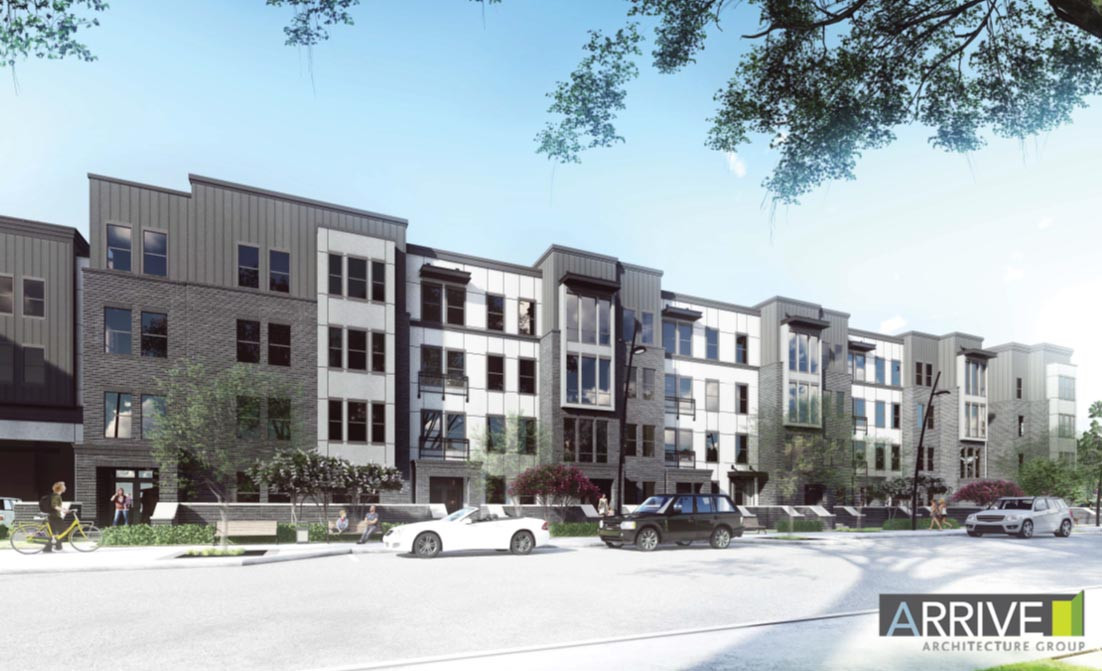
Apartments cause greater instability, crime and deterioration. Density is a disease that has undermined the health of older neighborhoods. Greenlining an area, prohibiting any new apartments, serves as a tourniquet to stop the bleeding in older low-income and predominantly Black and Hispanic neighborhoods. Homeowners and homebuyers in these neighborhoods may for the first time see a positive direction in their neighborhood. The incremental neighborhood devastation that each new apartment brings comes to a halt when new apartment construction is stopped. Every time a new home is built or an older home is renovated, the neighborhood gets better.
Greenlining Designates a Neighborhood to Receive City, State and Federal Money for Neighborhood Infrastructure, Landscaping and Other Public Improvements
Greenlining a neighborhood designates that area to receive priority for any local, regional and federal funds to support and improve the infrastructure and landscape of the neighborhood. Other public services like police and priority for bond program funding could also be included.
Cities like Dallas can also solicit Request for Proposals (RFP’s) and announce Notices of Funds Availability (NOFA’s) as incentives to developers and qualified nonprofits to build, identify and vet qualified homebuyers.
Installing New Curbs, Sidewalks, Parkway Trees, and High Speed Internet Connectivity in Established Neighborhoods
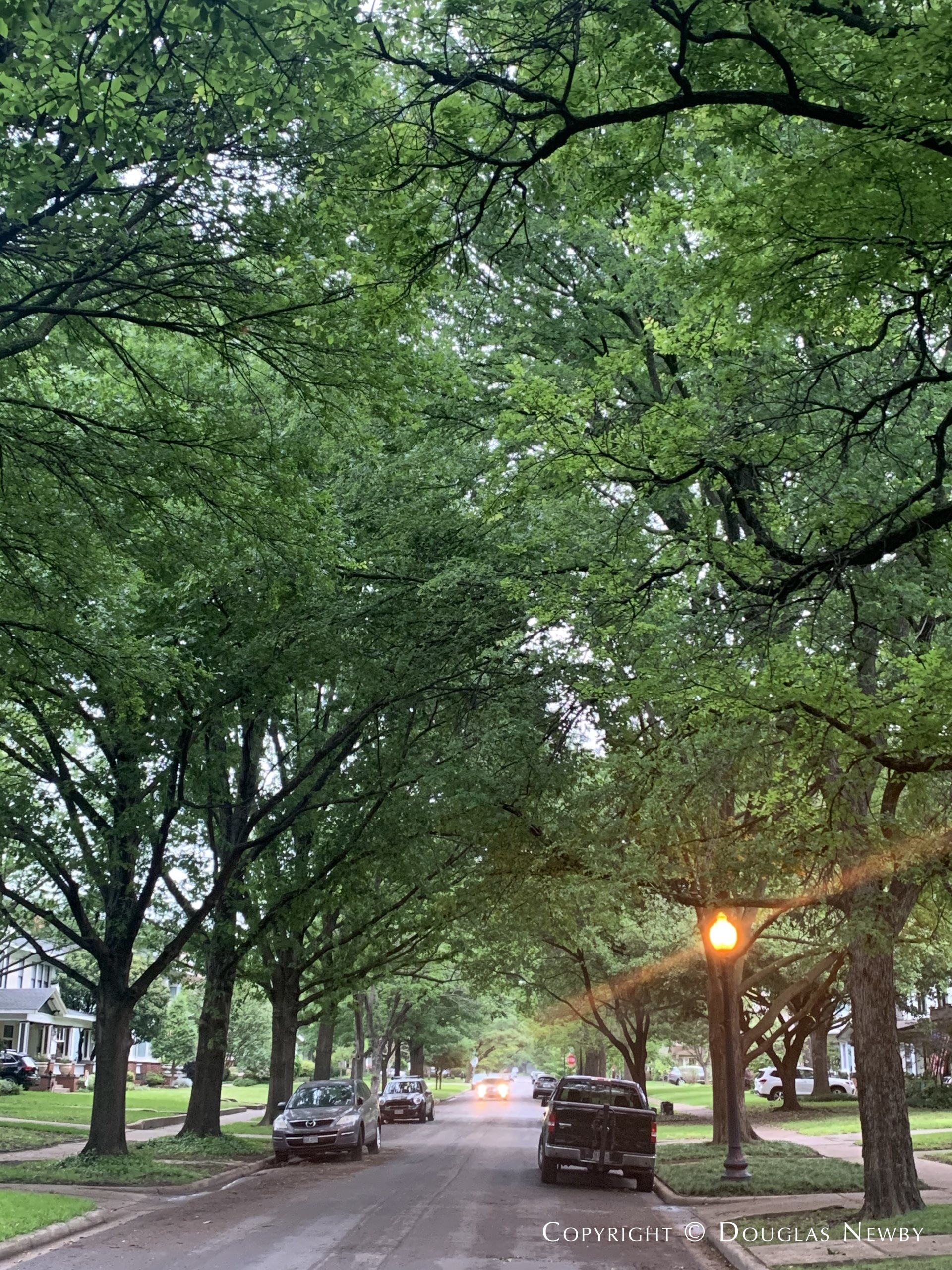
For instance, instead of approximately $33 million in funds for one developer in Dallas City Council District 3 in Southern Dallas to build a Low-Income Tax Credit apartment development, that $33 million could go for new curbs, sidewalks, street lights, parkway trees, and high speed internet connectivity in established neighborhoods in District 3.
Greenlined areas would also be given priority for any grants for green technologies and enhancements like charging stations, solar panels and shared geothermal wells that reduce energy use could also be part of creating neighborhoods that will be desirable for homebuyers and have positive impacts for city.
Enhancing Dallas neighborhoods with time honored plans, technological advancements and forward thinking green strategies would attract homeowners, transform a neighborhood and become the organic urbanism standard for other neighborhoods and other cities to follow.
Greenlining Would Designate Vast Undeveloped Land in Dallas’ District 3 For a Desirable Single-family Development Plan
In Southern Dallas there are still hundreds of acres of contiguous undeveloped land. Rather than the current trend of eliminating parkways and sidewalks that dangerously hug the streets, greenlining would designate an area for the kind of development plans that made Munger Place, Swiss Avenue, Highland Park, Volk Estates and Greenway Parks successful.
Regardless of the size or expense of the homes built in greenlined neighborhoods, the new parkways, boulevards, triangle parks and greenways would immediately create desirability and add value to the neighborhood being developed and those neighborhoods surrounding it. Homeowners and residents near greenlined neighborhoods will enjoy walking or riding their bikes through these new neighborhoods to enjoy an urban sense of nature. An organic urbanism approach that celebrates nature and the shared green space in the neighborhoods is the best way for the city to invest in green partnerships.
Dallas City Council District 3 in Southern Dallas Would Be the Perfect National Demonstration Area for Greenlining
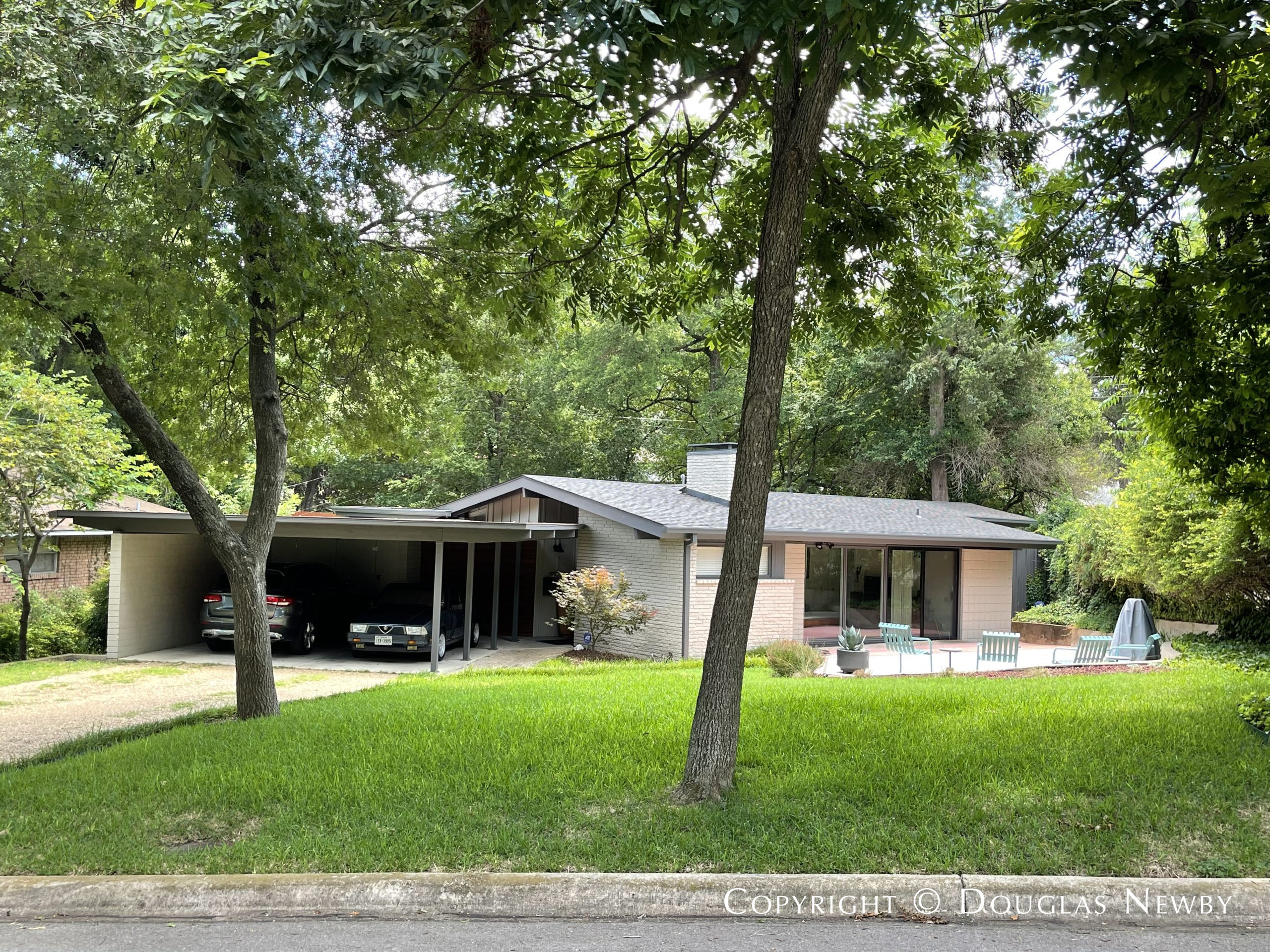
Dallas City Council District 3 would be an ideal national demonstration area for Greenlining and its power to transform a neighborhood. District 3 has inexpensive land that makes quality residential development possible. Also, District 3 has an abundance of dilapidated but inexpensive existing single-family homes that eliminate high cost barriers to new homebuyers. In addition, District 3 has another essential ingredient—passionate and sophisticated homeowners like architect and retired city planner, Darryl Baker, who understands the devastation that low-income apartments and multifamily zoning brings to the neighborhood.
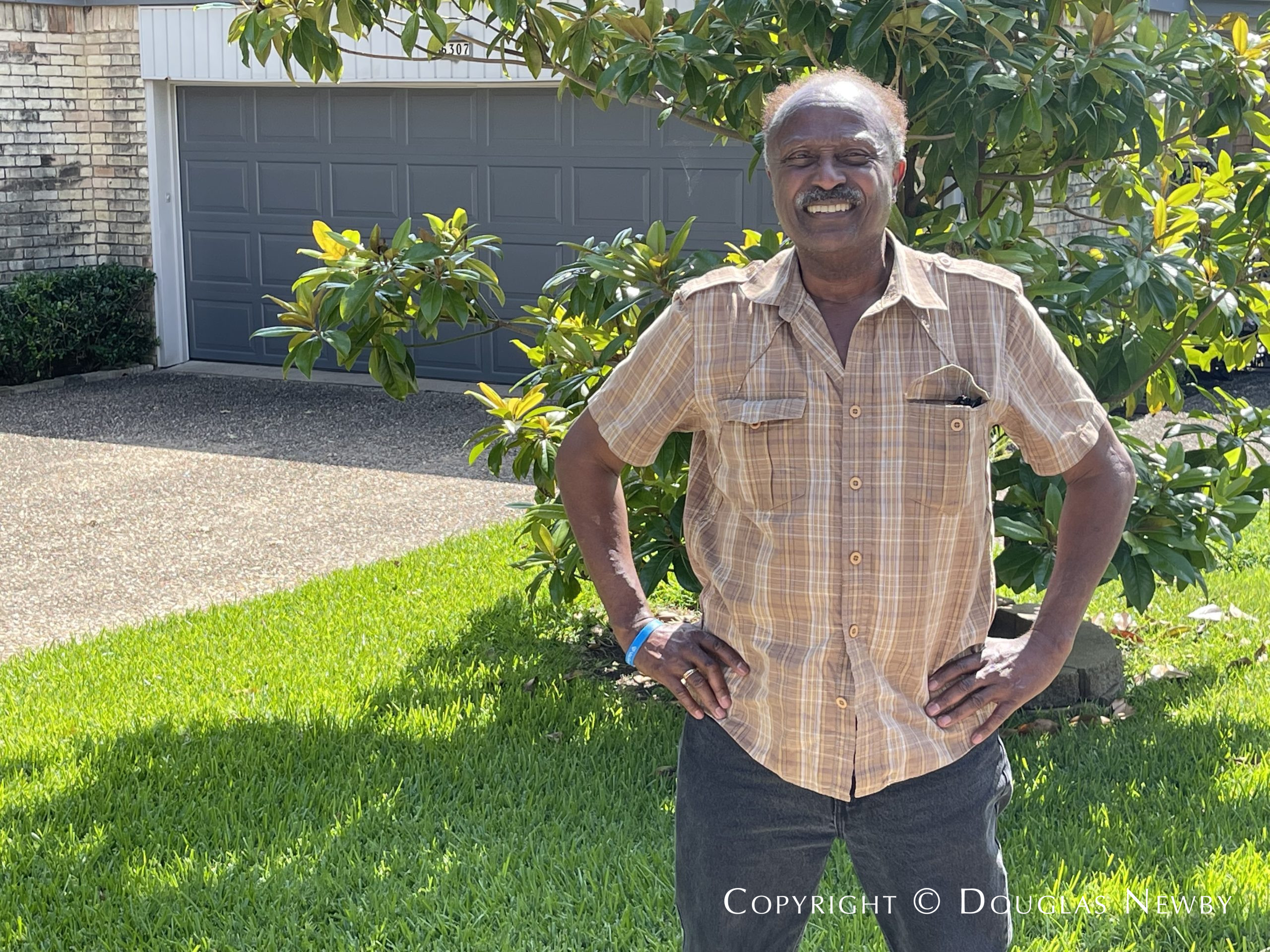
Greenlining is the solution for Southern Dallas and many low-income and predominantly Black and Hispanic neighborhoods. Greenlining would reverse and remedy the ill effects of redlining and bluelining that devastated Southern Dallas and other predominantly low-income and Black. The effects of redlining and bluelining have devastated Southern Dallas neighborhoods for decades. This Southern Sector of Dallas has continued to suffer due to the mixed low-income housing that the Dallas City Council continues to dump on District 3.
Southern Dallas District 3 is Ripe for Greenlining Revitalization
Southern Dallas’ District 3 has many natural attributes that can vault it to success. There are neighborhoods that have a beautiful and architecturally significant housing styles. There is an abundance of older homes with good structures. If purchased and rehabilitated, homebuyers would enjoy a mortgage payment lower than their monthly rent in government subsidized and/or tax credit apartments. District 3 also has hundreds of acres of continuous undeveloped land, much of it topographically interesting or close to trails and creeks.
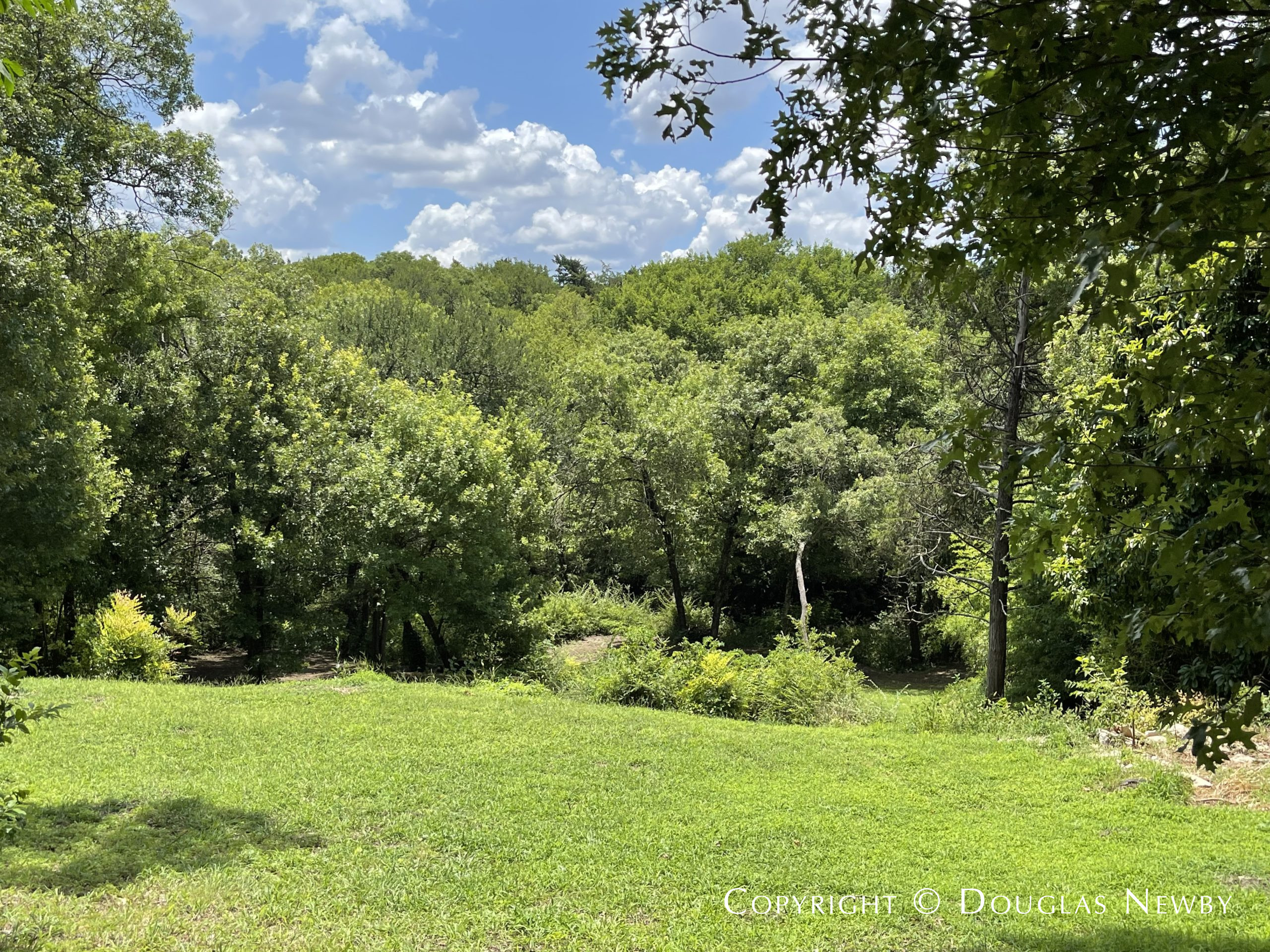
Southern Dallas Land and Homes are Incredibly Inexpensive
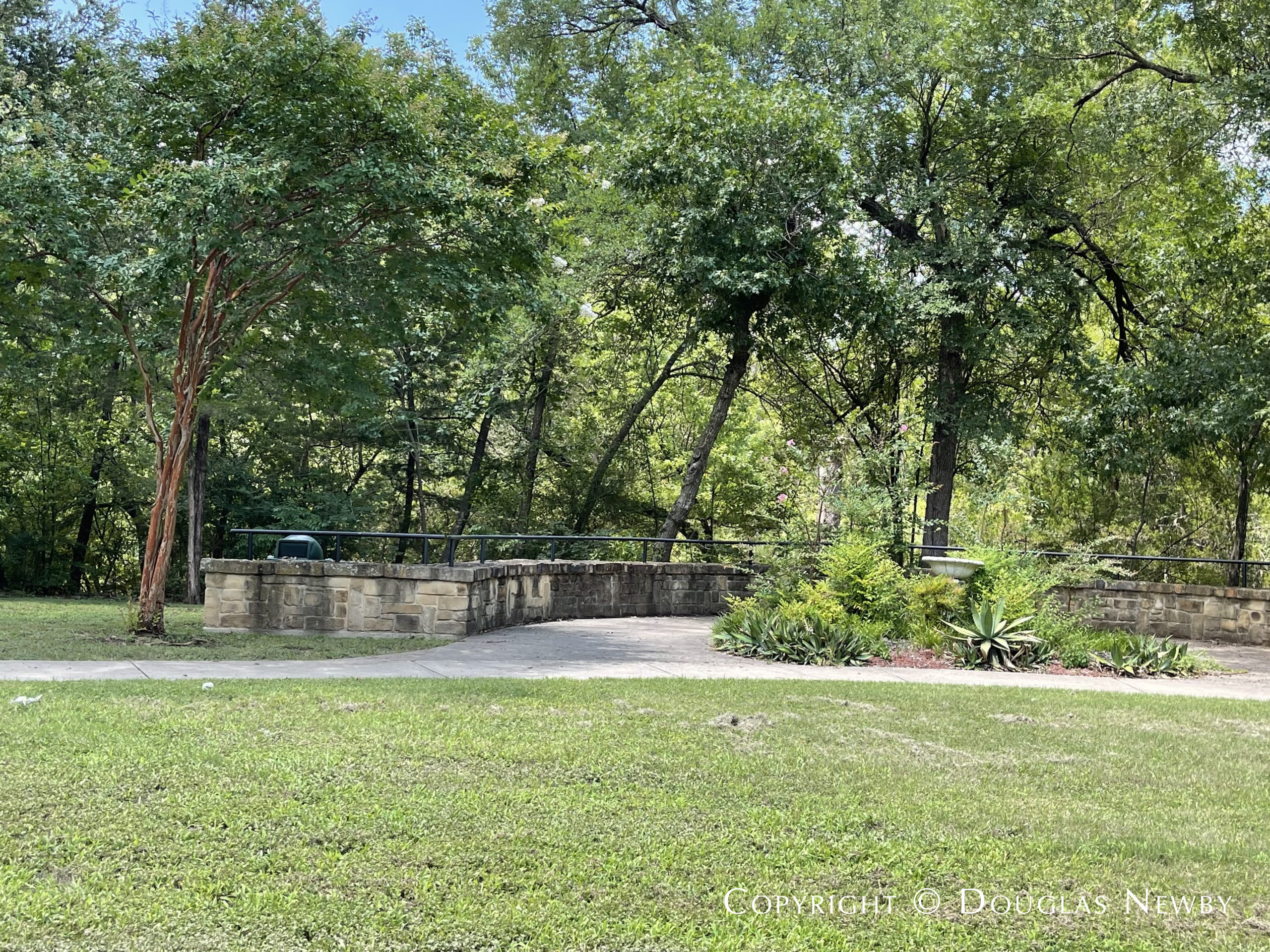
Why waste exceptional and incredibly inexpensive land on apartment developers when there is a huge demand and need for single-family homes that cost less to build per square foot than apartment units? When land here is incredibly inexpensive, that is the time to create a neighborhood development plan that includes boulevards, parkways, greenways, triangle parks, rear alleys, underground utility lines, and high speed Internet connectivity. Neighborhoods could be planned that included one-acre lots like those in Volk Estates, half-acre lots like those in Highland Park and Swiss Avenue, quarter-acre lots found in Greenway Parks, or 50-foot-wide lots found in Munger Place, Junius Heights and Mount Auburn in Old East Dallas. Homes could be built in many price ranges. As these neighborhoods develop and improve, the underlying land would appreciate in value, creating wealth for these homeowners who statistically have not had the same percentage of wealth because of their lack of access to loans, home ownership and lack of the city’s inadequate investment in the infrastructure in their neighborhoods.
Greenlining Increases Opportunities for Black and Hispanic Homebuyers to Buy Homes
Currently, traditionally underserved borrowers and homeowners must compete with developers of low-income apartments who are getting free government money to buy an old house that they will tear down, or to buy cheap vacant land to build subsidized and tax credit apartments. Greenlining would put a stop to free money going to apartment developers in greenlined areas where new apartments would be prohibited. Low- and middle-income homebuyers would have a level playing field and could buy older homes to fix up or inexpensive improved lots on which to build a home.
Old Homes in Need of Repair are an Underestimated Resource
One of the things I have observed over several decades watching the evolution of neighborhoods, is that well intended politicians and the privileged classes are offended by what they would consider substandard single-family housing. This is not a new phenomenon. For almost 100 years, housing reformers have made calls to raze “substandard housing because this housing is unfit for habitation.” Most recently in Dallas, we saw a political movement to force “slum landlords” to tear down their rent houses if they would not spend the money to bring them up to “minimum housing standards.” The cost of bringing these rent houses up to a city-sanctioned minimum housing standard would have cost the rent house owners over $100,000 per house for houses they were only charging the tenants $400 or $500 monthly to rent. Many of the tenants have been living in these houses for more than 10 years. Every time one of these substandard homes is torn down, there is one less opportunity for low-income residents to rent or to buy an inexpensive home and create wealth.
Even “Substandard Housing” Creates Wealth for Homeowners
Every artist and urban pioneer in the first wave of homebuyers who purchased homes in Old East Dallas in the 1970s were purchasing homes that the city considered substandard. These homes were also owned predominantly by absentee property owners who provided owner financing for the purchase of these dilapidated houses.
Since the homebuyers were predominantly white, (as were most of the transient tenants living in these divided up rent houses), most of the sympathy emanating from the politicians and privileged families across the city went to the transient tenants that these urban pioneers were allegedly displacing, not to the young artists and urban pioneers living in shabby and deplorable conditions, as they poured sweat equity into these wrecks of homes that they were fixing up.
After 45 years of neighborhood renovation and revitalization, there are still a few low-income apartments that are vacant and available for rent. As long as there are vacant apartments for rent, low-income tenants are not being displaced, particularly 45 years after the revitalization began.
Wealth Was Created for All Races and Income Groups in Old East Dallas
The greatest attribute of Old East Dallas 45 years ago was the extraordinarily inexpensive homes. These homes might not have been in good shape, but they ranged in price from $2000 in Mount Auburn to $5,000 in Junius Heights, $10,000 in Munger Place, and $20,000 on Swiss Avenue. These contiguous neighborhoods have gone up in price one-hundredfold in the last 45 years. Many of the original owners or families of the original owners still own these homes today.
Single-Family Rezoning of Munger Place, Junius Heights, Peak Suburban, Mount Auburn and Eventually Swiss Avenue Brought a 100X Appreciation
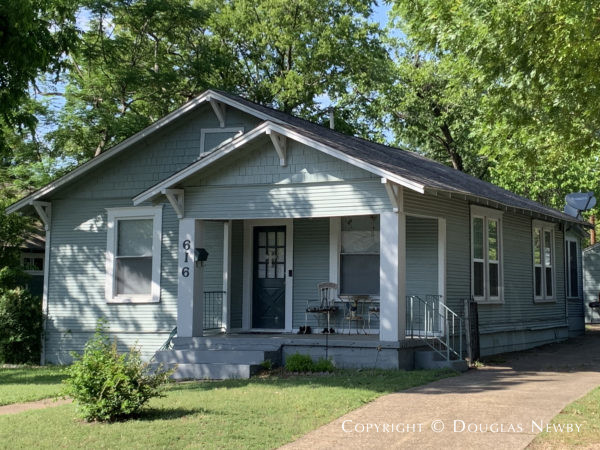
Mount Auburn, made up of very small bungalows along the Santa Fe Trail, has historically been a neighborhood affordable for lower income working families and nice enough for middle income families. Forty-five years ago, Mount Auburn homes sold for $2,000, and are now selling for well over $200,000. 
This Junius Heights home is found in a Junius Heights Historic District. Originally part of the Munger Place Second Addition. Joe Kendall created an Oklahoma land rush atmosphere when a gun went off at midnight and everyone ran to stake their lot. Homes that cost $5,000 before the revitalization, now cost well over $500,000 in Junius Heights. 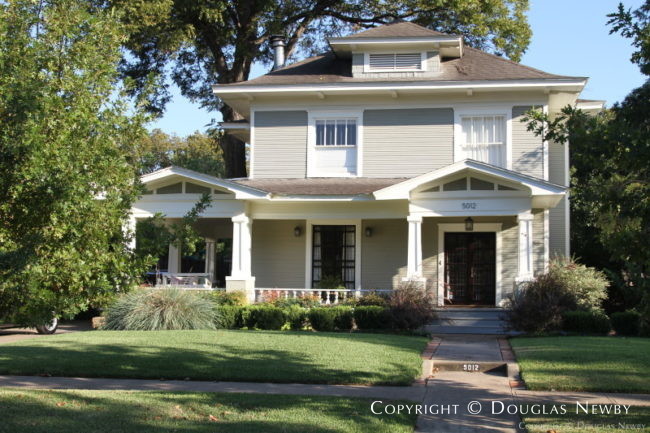
Prior to Munger Place being greenlined and rezoned single-family, homes in Munger place were purchased for approximately $10,000. Now homes in Munger Place sell for $1 million dollars. 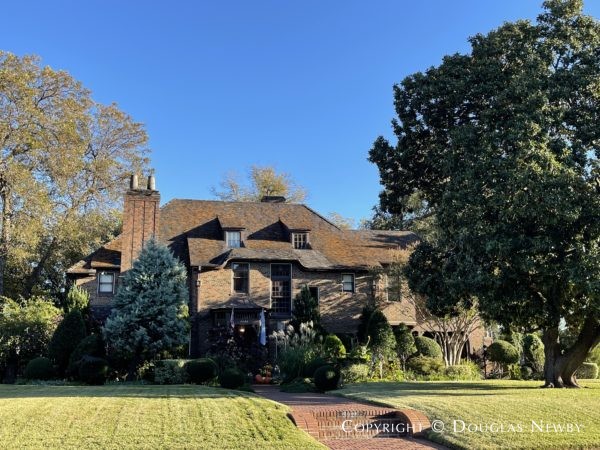
Homes on Swiss Avenue that might have sold for as little as $20,000 before the neighborhood was rezoned are now worth well over $2 million.
Forty-five years ago, Old East Dallas was struggling with many of the same problems Southern Dallas faces today. The underlying problem for both of these neighborhoods was the multifamily zoning and apartments that inhibited single-family renovation or new construction. With the support of Mayor Robert Folsom, a developer, Old East Dallas, comprised of mostly apartment houses, was rezoned single-family which led to the revitalization of neighborhoods and home prices that are 100 times as high as they were 45 years ago. Homes that cost $2,000 in Mount Auburn are now $200,000. Homes in Junius Heights that were $5,000 are now $500,000. Homes in Munger Place that were $10,000 are now $1 million, and homes on Swiss Avenue that were $20,000 are now $2 million.
Single-Family Rezoning Prohibited New Apartments in Old East Dallas Which Created Value and Demand for Single-family Homes
Single-family rezoning created wealth for single-family homeowners. Single-family rezoning also provided economic appreciation for the existing multifamily property owners. One family in Munger Place, who are neighbors of mine, watched their home decline in value for 30 years when the neighborhood was rezoned multifamily, and then they were able to watch their home appreciate in value for 40 years after the neighborhood was rezoned single-family.
Dilapidated housing can be an important asset that appreciates with a homeowner presence. Howard Husock wrote a recent book, The Poor Side of Town and Why We Need It. He was not arguing to keep a poor side of town. He was arguing that the poor side of town should not be kept poor but neither should dilapidated homes be torn down and replaced with apartments that displace home ownership presence. Husock gives examples of the community stability that comes with a homeowner presence in dilapidated neighborhoods. Neighborhood stability and a positive direction of the neighborhood are more important than its current physical condition.
Single-Family Homes Create Wealth for Homeowners and a Positive Direction for Neighborhoods
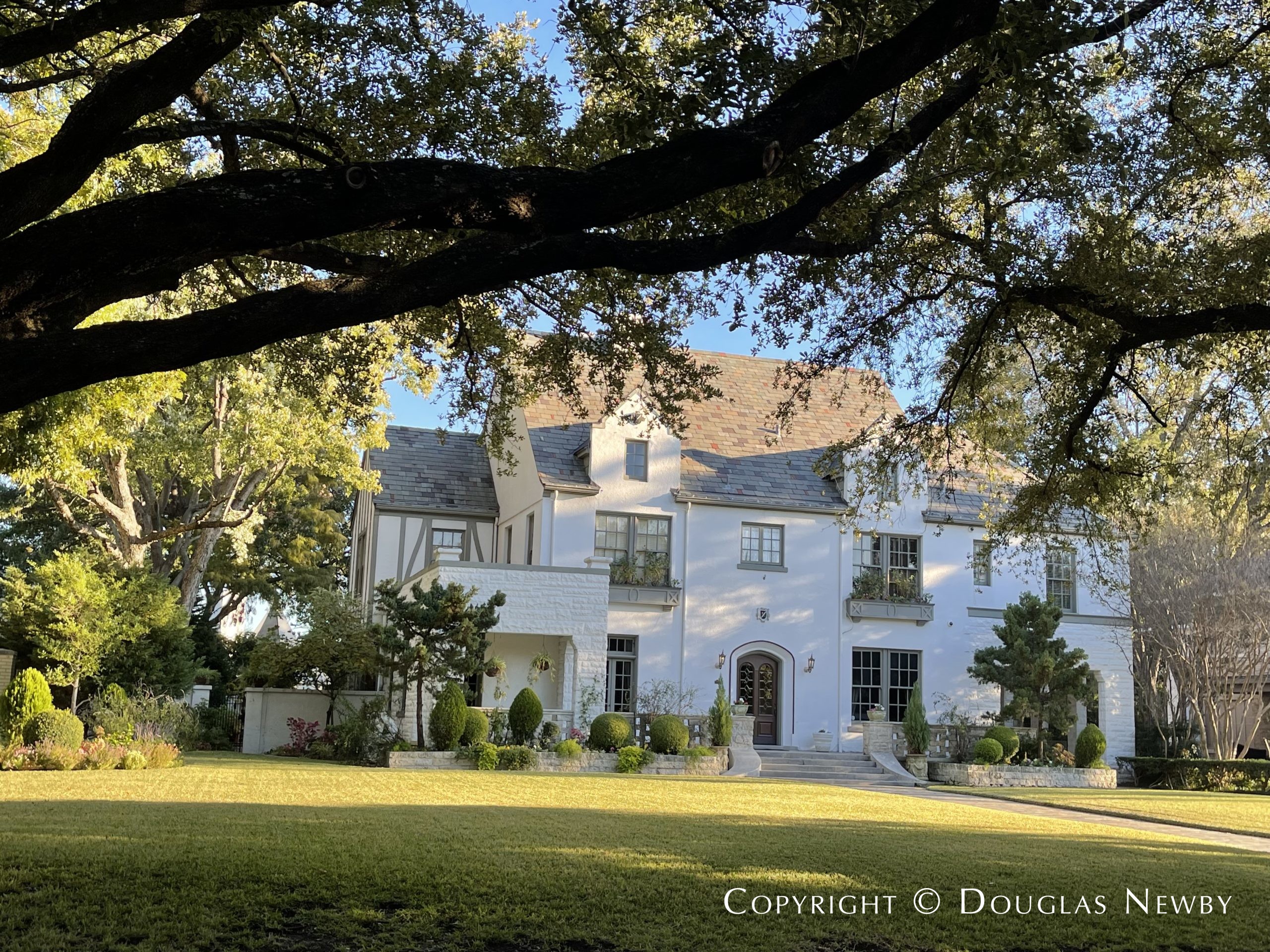
The two most important goals for Southern Dallas neighborhoods should be creating generational wealth for predominantly Black and Hispanic families and creating a positive direction for the neighborhoods. Redlining starved opportunities for families wanting to BUY homes with conventional financing. This accelerated the decline of these neighborhoods. Apartment zoning and, even worse, bluelining, that gave free money to developers for low-income apartments accelerated the decline of neighborhoods and eliminated opportunities for single-family home purchases and wealth creation for these traditionally underserved families.
Greenlining Creates an Environment for Traditionally Underserved Families to Purchase Single-Family Homes and Create Generational Wealth
Greenlining creates a positive direction for a neighborhood. The physical attributes of the neighborhood improve, and the home ownership presence increases. Greenlining provides more opportunities for underserved families to buy homes and create generational wealth. Greenlining also makes neighborhoods more attractive and desirable for new retail and restaurants and grocery stores to open in these areas. If the city, state, or federal governments have money or grants to spend on housing, the smart thing and the efficient thing to do is to spend it on developing infrastructure and landscaping of existing neighborhoods that make them beautiful and benefit the residents of Southern Dallas — not North Dallas or out of town or out of state developers of low-income apartments.
All of Dallas would benefit from greenlining neighborhoods in Southern Dallas.

